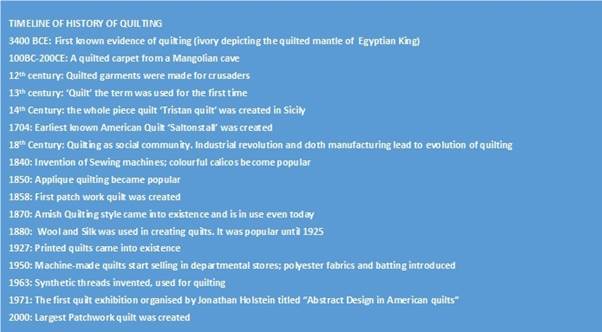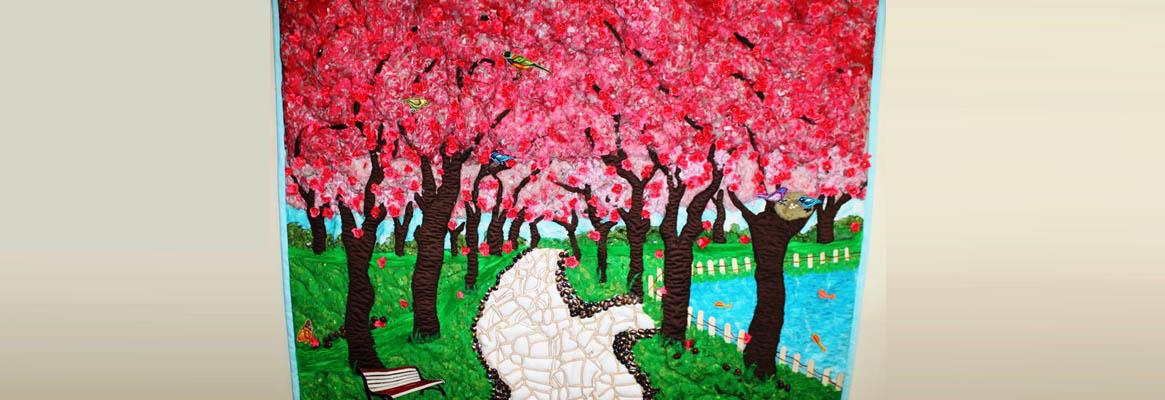The world of quilting is exciting, creatively satisfying, filled with love and colour!
It’s a photo…it’s a painting….no, it’s actually a quilted artwork!
Yes, it’s stunning too! For those who look at artwork like this and baulk at the thought of the complexity of it, here’s some great news…you can do this too! You don’t need to be an expert sewist or really an artist, all you need to do is get a user-friendly quilting machine and get started…the more you explore and experiment, the better you will become.
The last year and a half have seen a whole new breed of quilters who are passionate about what they do. Plus, there are many advantages to picking up a hobby like quilting:
A) It gives you a break from screens.
B) It’s calming and de-stressing
C) It keeps your brain mentally agile
D) It helps you explore your creativity and unleash your potential
E) It helps you become part of a community, and
F) It’s a skill that goes a long way in creating customised and personalised gifts that are always cherished. That’s a long list of wins, right?
For the uninitiated, quilting is an age-old art and can be traced back to many ancient civilisations within China, North East, and the Middle East. The word ‘Quilt’ is linked to the Latin word 'culcita', meaning a bolster or cushion – and was first used in England in the 13th century when the quilts were described as coverlets and were made of three layers stitched together to make one layer. In fact, the first known evidence of quilting, the ivory carving depicting the King of the first Egyptian dynasty wearing a quilted mantle (Pharaoh) dates back to 3400 BC and is now preserved in a British museum. The oldest surviving quilted piece – a linen carpet is dated between 100BC and 200CE and found in a Mongolian cave – is now housed in the Saint Petersburg department of the Russian Academy of Sciences, Archaeology section.
The art of quilting evolved over time with examples – from the ‘trapunto’ or stuffed quilting that featured lively scenes from folklore to the intricately patterned doublets and overcoats – now occupying the pride of place in museum collections across the world. Till about 1840, quilting was primarily done by hand, but the invention of the sewing machine and the growth of the textile industry really proved a cornerstone for the art of quilting. Quilters started experimenting with design, fabric, colour, and patterns including story-boarding.
The one thing that’s common amongst all quilters is that they swear that they never feel lonely or bored when they play with bits and pieces of fabric, and soon they are churning out yet another amazing piece of creative art. A symbol of love and warmth, quilting gets even more enjoyable as you learn and use new techniques and tools. Apart from the basic stuff like needles, pins, hoops, etc, there are more tools and accessories available that would help you in creating beautiful quilts while enhancing your quilting skills. As you progress with your quilting skillsets, you will enjoy using more and more tools and accessories-from templates, hoops, different types of needles, viz, the tools that save your time; to the embellishments like embroidery pieces. The technological interface with the new state of art sewing machines powered with Japanese technology add more fun.
For all of us quilters today, we are in luck as the new age innovative quilting machines are extremely user-friendly--computerised sewing machines boasting of specialised quilting attachments, a large number of built in stitches, good stitching speed and precision, catering to everyone–from novice to expert. So, if you’ve always wondered how now’s the time to get started.

About the author: Parveen Kumarr Sahni is the President, Sewing Machines of Usha International.







Comments